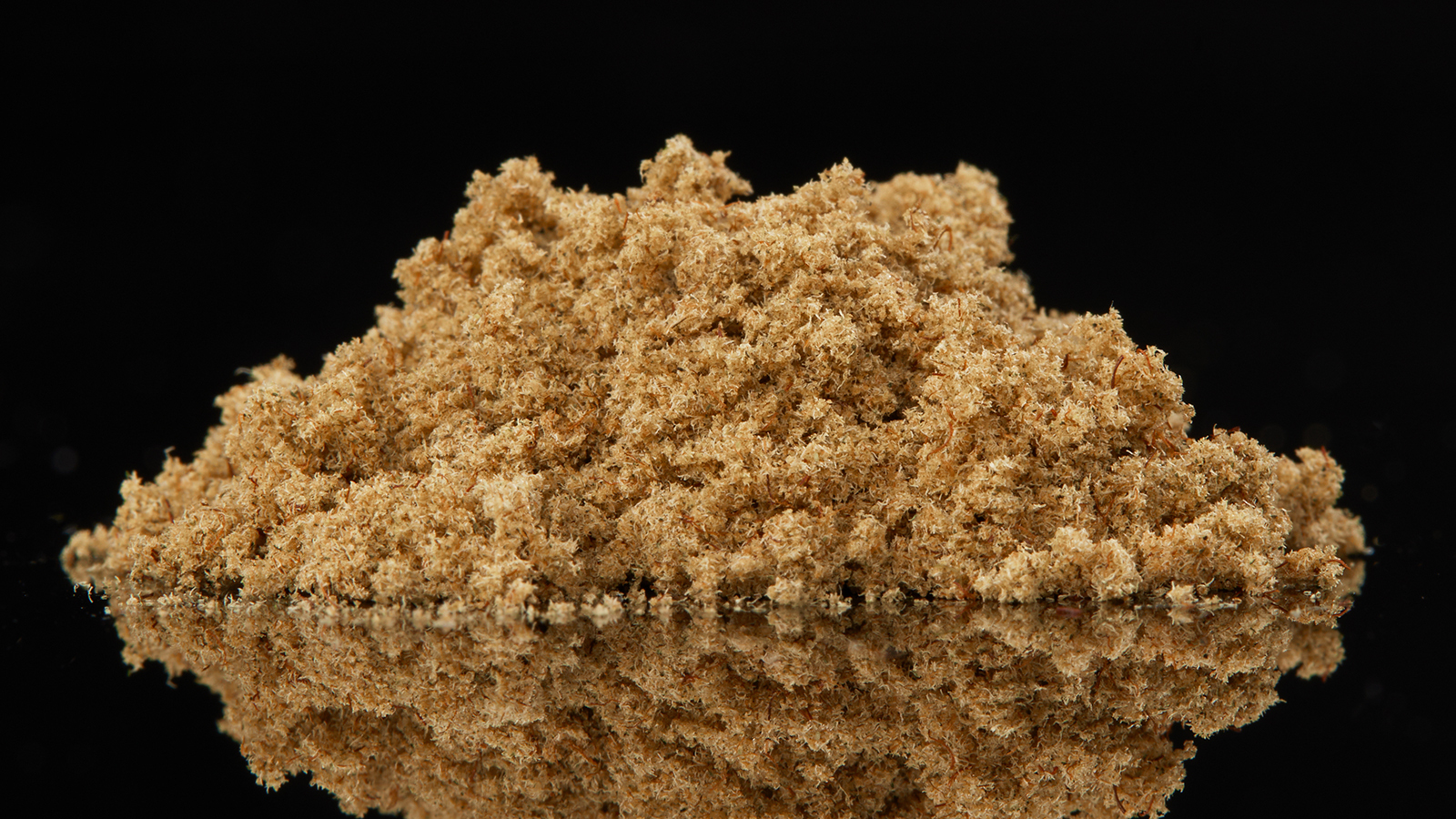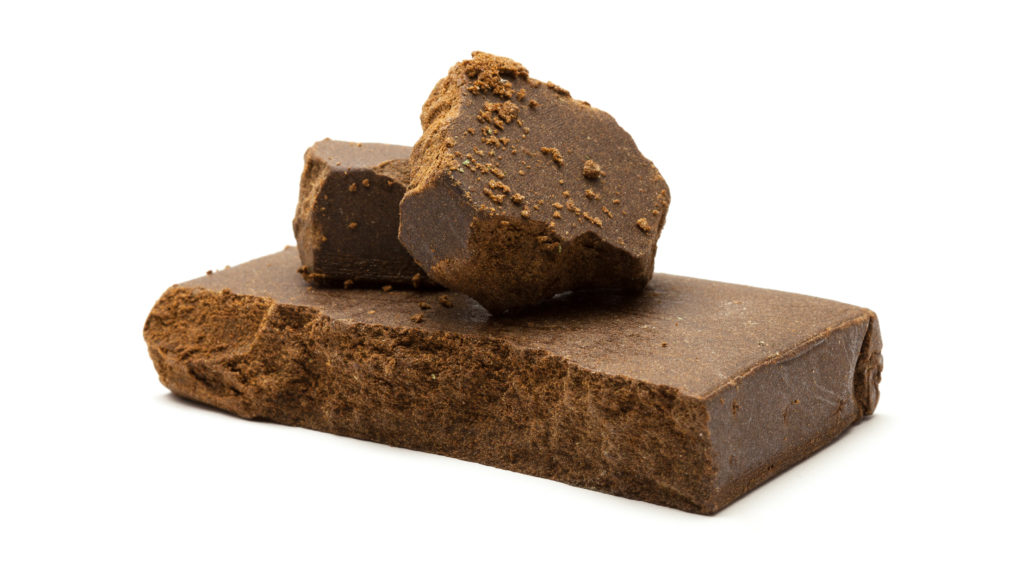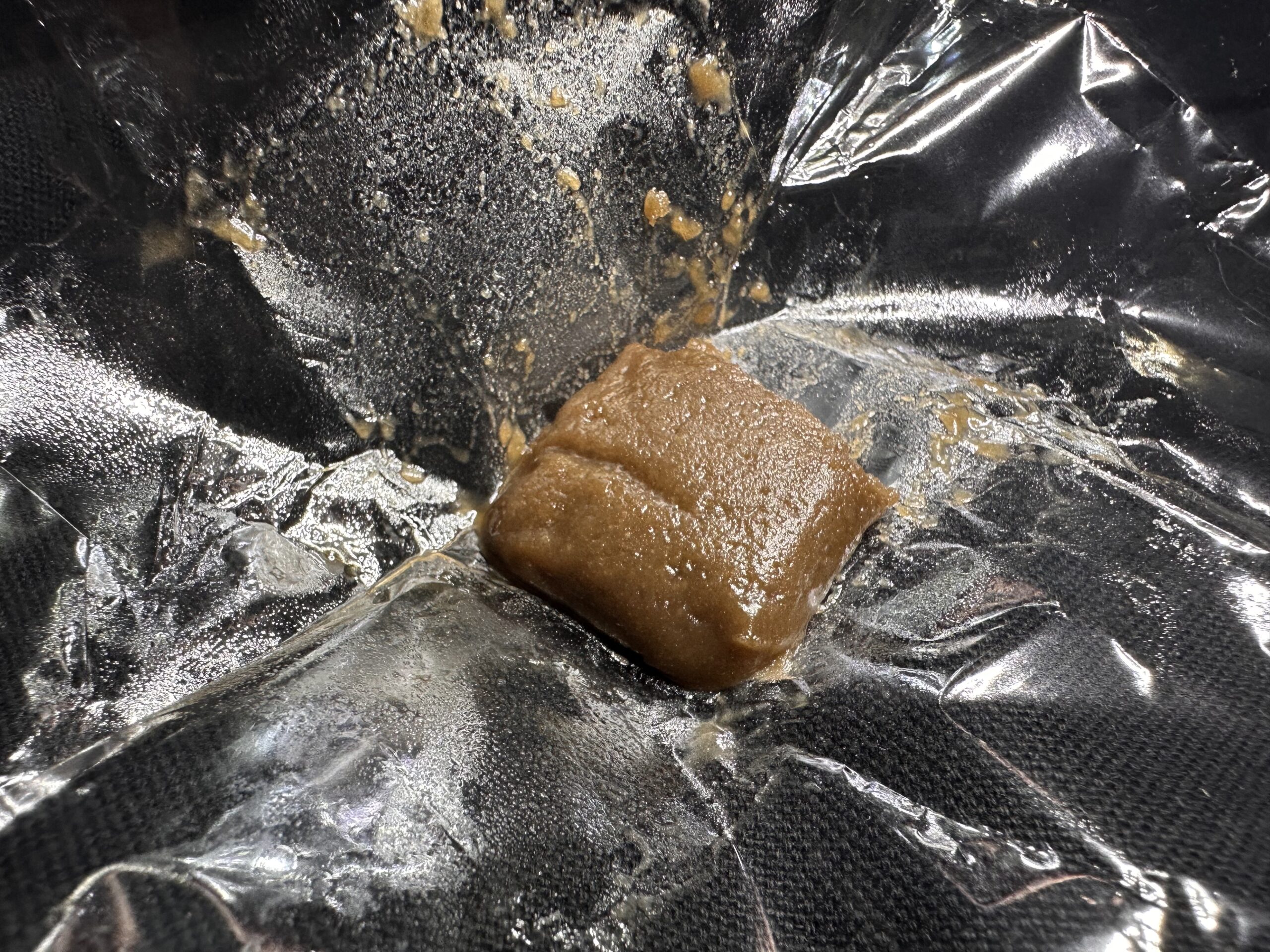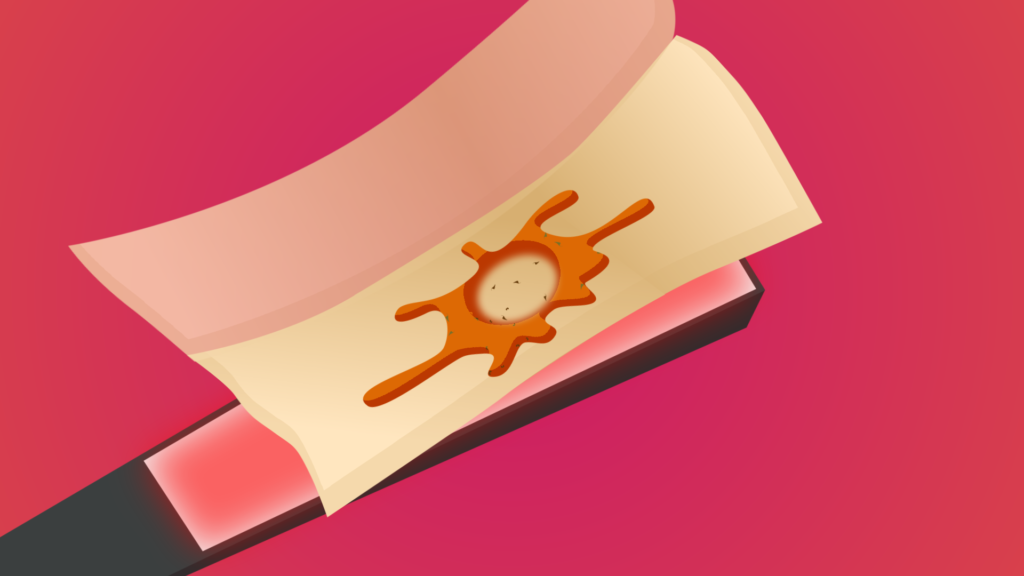If you've used a multi-chamber weed grinder, you've probably seen dust-like material accrue in the bottom chamber. That “dust” is called kief — highly potent and worth collecting. Learn about kief, ways to collect it, and how it can enhance your cannabis experience.
What is kief?
Kief refers to the tiny, crystal-like structures found on the surface of cannabis flowers. These structures, called trichomes, are the resinous, glandular hairs that produce and store the plant's cannabinoids, terpenes, and flavonoids, and break off during grinding. What's left behind in the grinder is kief.
 Photo by: Gina Coleman/Weedmaps
Photo by: Gina Coleman/WeedmapsImage lightbox

The most abundant cannabinoid found in kief is tetrahydrocannabinol (THC), which is responsible for the intoxicating effects of cannabis.
How to collect kief
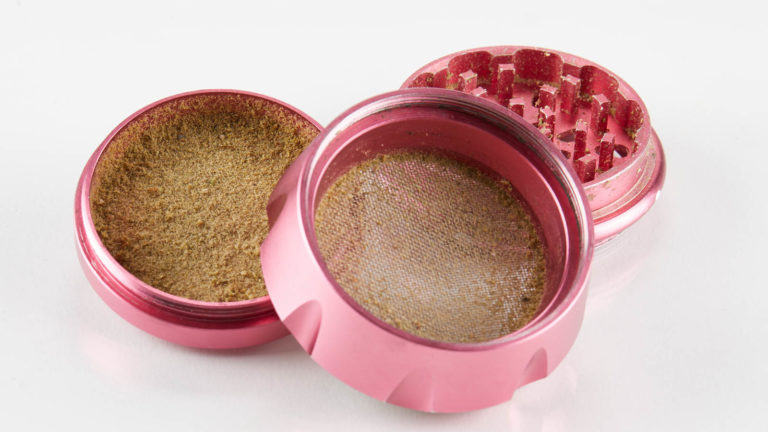 Photo by: Gina Coleman/Weedmaps
Photo by: Gina Coleman/WeedmapsImage lightbox

Kief is often collected from cannabis flower using a grinder with a kief catcher or by sifting the plant material through a fine mesh screen with the use of a kief box.
- Grinder method: Many grinders — typically those made of aluminum or stainless steel — come with a kief catcher, the bottom chamber below the screen. As you grind bud, trichomes fall through the screen and collect in the catcher. Once accumulated, you can use a small scraper to remove the kief.
- Kief box method: If you're processing large quantities of kief at home, consider purchasing a kief box. It typically has two chambers: one for sifting cannabis flower and one for catching kief. Put your cannabis into the chamber, close the box, and shake. As you shake the flower, the trichomes fall off, get sifted through the mesh screen, and end up in the kief side of the box.
How to use kief
 Photo by: Gina Coleman/Weedmaps
Photo by: Gina Coleman/WeedmapsImage lightbox

There are several ways you can use kief on its own or with other cannabis products:
- Sprinkled on top of ground flower. Enhance the potency of a bowl by sprinkling kief on top of the ground flower. An added layer of kief can increase the overall cannabinoid and terpene content, making for a more potent smoking experience.
- Roll an infused joint. Infused pre-rolls are pre-rolled joints with the addition or infusion of concentrates either inside the joint, on the outside paper, or a combination of both. Make your own infused joint by sprinkling kief over ground flower before rolling.
- Make hash. Apply heat and pressure to collected kief to create hash, a concentrated cannabis product. Simply fold the kief inside parchment paper and apply heat and pressure with a hair straightener or a specialized rosin press. You can smoke or dry-vape the resulting hash.
- Create moon rocks. Moon rocks are made by taking a cannabis bud, coating it with a sticky cannabis concentrate of your choice, then rolling it in kief. Once prepared, you can smoke Moon Rocks in a pipe, bong, or vaporizer.
- Add to edibles. Incorporate kief into your homemade cannabis edibles by decarboxylating it first — heating it at a low temperature to activate the cannabinoids — and then mixing it into a fat, like oil or butter, for even distribution.
How to store kief
Correctly storing kief helps maintain its potency, flavor, and quality over time.
 Photo by: Gina Coleman/Weedmaps
Photo by: Gina Coleman/WeedmapsImage lightbox

Here are some tips for storing kief to keep it stable and potent for as long as possible:
- Use an airtight container. Airtight containers, such as a glass jar with a screw-top lid or a specialized weed storage container, help prevent exposure to air and humidity — factors that can degrade the quality of the kief.
- Store in a cool, dark place. Store the container in a cool, dark place away from direct sunlight or heat sources. Exposure to light and heat can cause the cannabinoids and terpenes to break down, reducing the potency and flavor of the kief.
- Avoid moisture. Moisture can promote mold growth and spoil the product. Ensure the container is completely dry before adding the kief, and avoid opening the container in a humid environment.
- Limit handling. The oils on your skin can degrade the quality and potency of the kief. Use a small scoop, spoon, or brush to handle your kief.
- Label and date the container. Label your container with the strain name, if known, and the collection date. When stored properly, kief can maintain potency, flavor, and quality for up to a year.
Which strains produce the most kief?
While an individual plant's trichome production can vary due to growing conditions, genetics play a significant role in determining trichome density. Some strains are known for their high trichome production, making them ideal for collecting kief, including:
- White Widow: A well-known hybrid strain with a balanced profile, White Widow is famous for its frosty, resinous buds.
- GSC: A potent, indica-dominant strain, GSC is known to be dense and sticky.
- GG4: GG4 is a popular hybrid strain with a slight indica dominance, usually abundant with trichomes.
- Jack Herer: Named after the cannabis activist and author, Jack Herer is a classic sativa-dominant strain renowned for its frosty, resin-coated buds.
- Blue Dream: Blue Dream is a popular hybrid strain with a sativa-dominant profile packed with trichomes.
- Sour Diesel: Sour Diesel tends to have resinous, high-THC buds that result in a strong cerebral high.
- Bruce Banner: A potent hybrid strain with a slight sativa dominance, Bruce Banner is another fan favorite among those who like to collect kief.
How much flower do you need to collect a gram of kief?
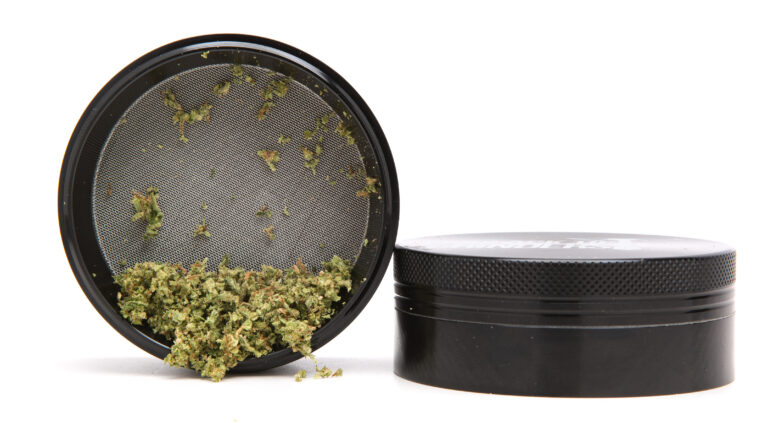 Photo by: Gina Coleman/Weedmaps
Photo by: Gina Coleman/WeedmapsImage lightbox

The amount of flower needed to obtain a gram of kief can vary significantly based on several factors:
- Strain: Different cannabis strains have different trichome densities, which can affect the amount of kief produced. Strains with a higher trichome density will yield more kief than those with a lower density.
- Quality: Higher-quality buds usually produce more trichomes than lower-quality, less potent buds.
- Grinder: Grinders with a kief catcher can help collect and separate kief more efficiently, leading to a higher yield.
- Age and handling: Older, drier cannabis may produce less kief than fresh, properly cured buds. Additionally, excessive handling of cannabis flower can knock off some trichomes, reducing the amount of kief you can collect.
Given the above variables, it's difficult to provide an exact amount of flower needed to collect a gram of kief. However, as a rough estimate, you may need to grind anywhere from 7 - 14 grams, about a quarter to a half ounce.
Kief vs hash vs dry sift: What's the difference?
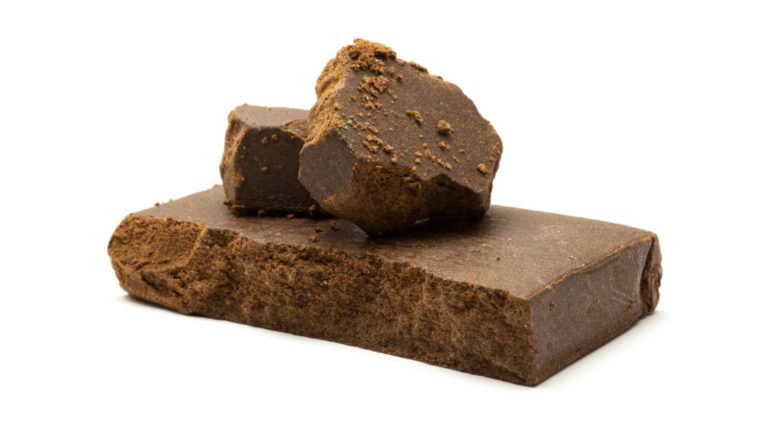 Photo by: Gina Coleman/Weedmaps
Photo by: Gina Coleman/WeedmapsImage lightbox

While these terms are often used interchangeably, there are differences between kief, hash, and dry sift.
- Kief: Kief is a potent form of cannabis created by trichomes, or resin glands, sifted from cannabis flowers with a mesh screen or sieve. It has a loose, powdery appearance.
- Hash: Hash is a hardened, solid piece of compressed kief. It's possible to make hash at home by collecting enough kief, folding it between two pieces of wax paper, and pressing it with a hair straightener or an iron.
- Dry sift: Dry sift can be another term to describe kief because the dry trichomes “sift” to the bottom of a grinder, but it more accurately denotes collecting large amounts of kief in commercial cannabis operations.
FAQ
Why collect and use kief?
People enjoy kief because it's potent and easy to collect. Kief is a simple DIY way to make concentrates at home, and it's also versatile — if you collect enough of it, you can press it into hash or add it to a bowl, joint, or any other weed-smoking method to boost the THC level.
Is kief dangerous?
Kief offers high concentrations of THC, but when consumed cautiously, it presents no more danger than cannabis concentrates, extracts, or edibles.
Does kief get you higher than bud?
Gram for gram: yes. Kief lends itself to a more potent high than regular flower. However, it depends on the strain and consumption method. Since kief is concentrated trichomes, it's inherently more potent than buds of the same strain. That's one reason why some consumers prefer to use small amounts of kief to boost the potency of other forms of cannabis, as opposed to consuming kief by itself.
Is kief illegal?
If you live in an area where cannabis is illegal, yes. Otherwise, it depends on whether concentrates are legal where you live. Consult a local attorney for specifics.
Is it worth investing in a kief box?
If you grow weed at home and have large quantities of kief to collect, a kief box may be a helpful accessory. Otherwise, simply collecting and storing the kief that accumulates in your grinder may be enough for you.
What micron screen is best for kief?
Microns — equal to one-millionth of a meter — are used to measure the size of the openings in a filter screen. Using screens of varying micron sizes is how hash makers capture trichomes from buds and other plant parts.
Trichome glands range in diameter from 20 - 120 microns. This range corresponds with the micron sizes on the most commonly used screens. The larger micron sizes capture the entire capillary-stalked trichomes (90 - 120 microns), while the smaller micron sizes (20 - 40 microns) isolate the glands from the stalks.
Does kief go bad?
Kief can lose its potency and quality over time, especially if it's not stored properly. While kief doesn't necessarily "go bad" like perishable food items, it can degrade in quality, making it less enjoyable and effective when consumed. Factors like exposure to air, light, heat, and humidity can contribute to the degradation of kief's cannabinoids and terpenes.
Kief stored under optimal conditions can maintain its potency and flavor for up to a year or longer. However, the gradual decrease in potency is normal, as cannabinoids and terpenes slowly and naturally degrade over time.
Does kief burn faster or slower than flower?
Kief generally burns faster than cannabis flower due to its finer, powdery texture and higher concentration of cannabinoids. Smoking or vaporizing ignites more quickly and burns faster than the denser plant material found in cannabis flower. Because of this, kief is often consumed in smaller quantities or mixed with flower to create a more even and controlled burn.
When sprinkled on top of a bowl, joint, or blunt, it's important to spread kief evenly to ensure a consistent burn. Combining kief with flower can enhance the potency and flavor of the smoking or vaping experience, but be mindful of the faster burn rate and higher potency of kief.
What kind of high do you get from kief?
The high you get from kief depends on the specific strain of cannabis it comes from and the concentrations of cannabinoids and terpenes in the trichomes.
Since kief is a concentrated form of the trichomes, it generally provides a more potent and intense high compared to cannabis flower. It's recommended to start with a small amount — the equivalent of a grain of rice — and adjust your consumption based on your desired effects.
Does kief save you money?
Yes, collecting and using kief can potentially save you money in several ways:
- Increased potency: Kief can be more potent than cannabis flower. Adding kief to your cannabis can enhance the potency of your smoking or vaping experience, meaning you may need to consume less flower to achieve the desired effects.
- Versatility: When grinding flower, some kief is usually lost. By using a grinder with a kief catcher, you can collect the kief and incorporate this valuable byproduct in several ways. Versatility allows you to create different cannabis products with leftover kief.
DIY concentrates: Making concentrates with kief — such as hash or rosin — can be more cost-effective than purchasing ready-made concentrates from a dispensary or retail store.
Written by Tony Daniels | Featured image by Gina Coleman/Weedmaps

